Klikk her for norsk versjon av dette blogginnlegget.
An animated story created by a group of 4-5 year old children
This is the title of an article written together with Trude Hoel. The article is part of my PhD thesis and is published in Journal of Early Childhood Literacy (Click here to read the article).
In the article we explore how different modalities and narrative devices contribute to the deveolopment of an animated story created by six young children (age 4-5 years) and a early childhood teacher.
.
Animation movie
By drawing on socio-semiotic multimodal perspectives (Kress, 2010; Kress & Jewitt, 2003), the animated movie is analysed. We understand meaning making as a combination of several modalities.
A key feature of an animated movie is the combination of several modalities — such as still images, voice, music, and text. In other words. The story is expressed through several modalities, and we look at all these modalities are equally important.
Another key feature is the sequences of still images that create an illusion of movement, f.ex., a moving Duplo-figure. However, it is not the still images in itself that are of interest — but the movment that is created — the moving images. This is illustrated in the pictures below, of the stepmother going for a walk.
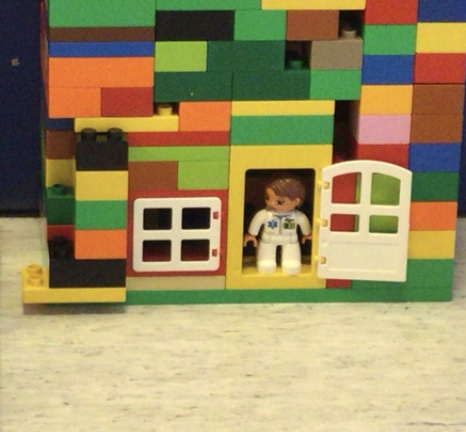
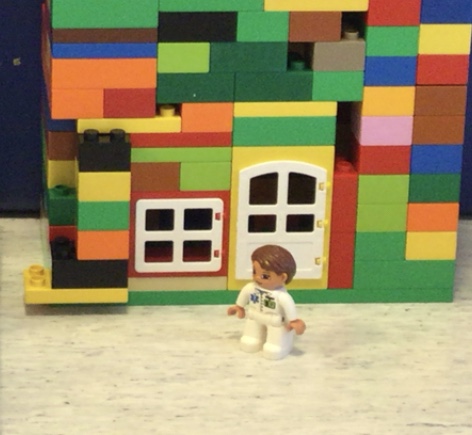
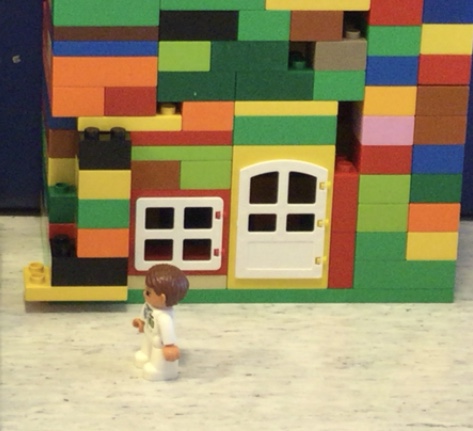
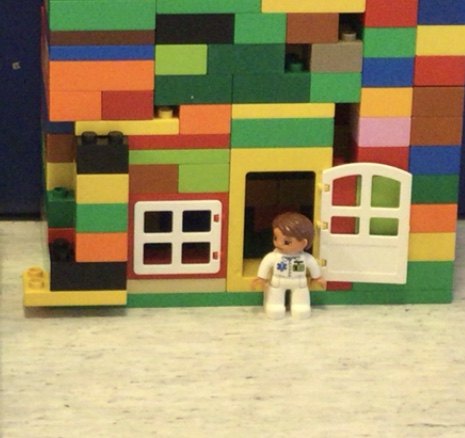
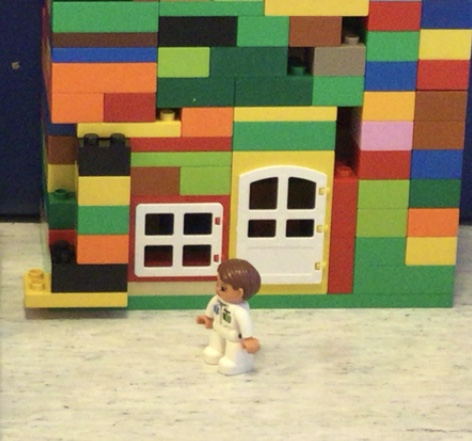
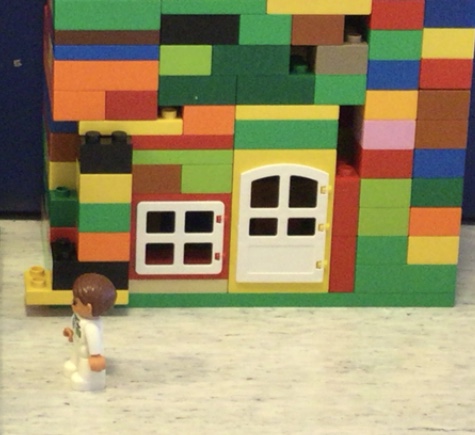
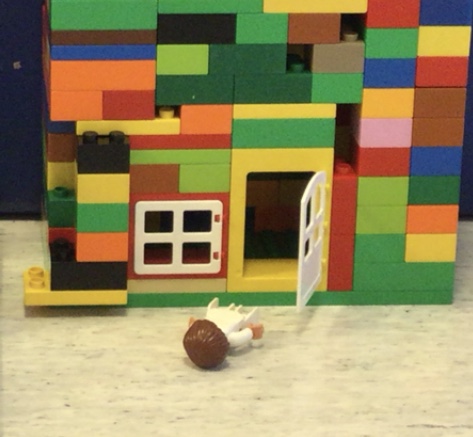
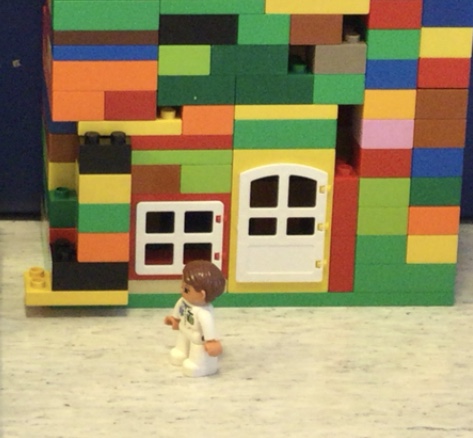
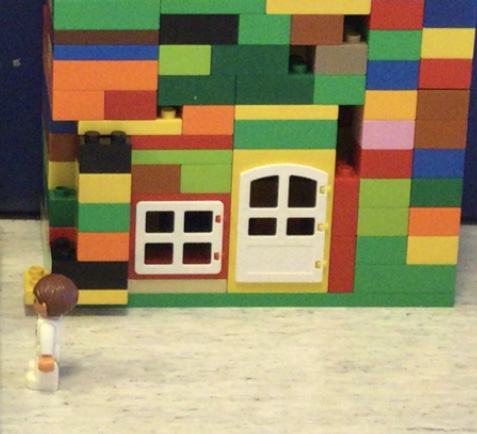
.
Rapunzel
The animated movie created by the children in this study is about princess Rapunzel who is trapped in the castle by her stepmother. The children have used several well-known elements from the fairytale genre, such as, «once upon a time», home-out-home, and repetitions. In the voice over, the children describe what happens in the movie.
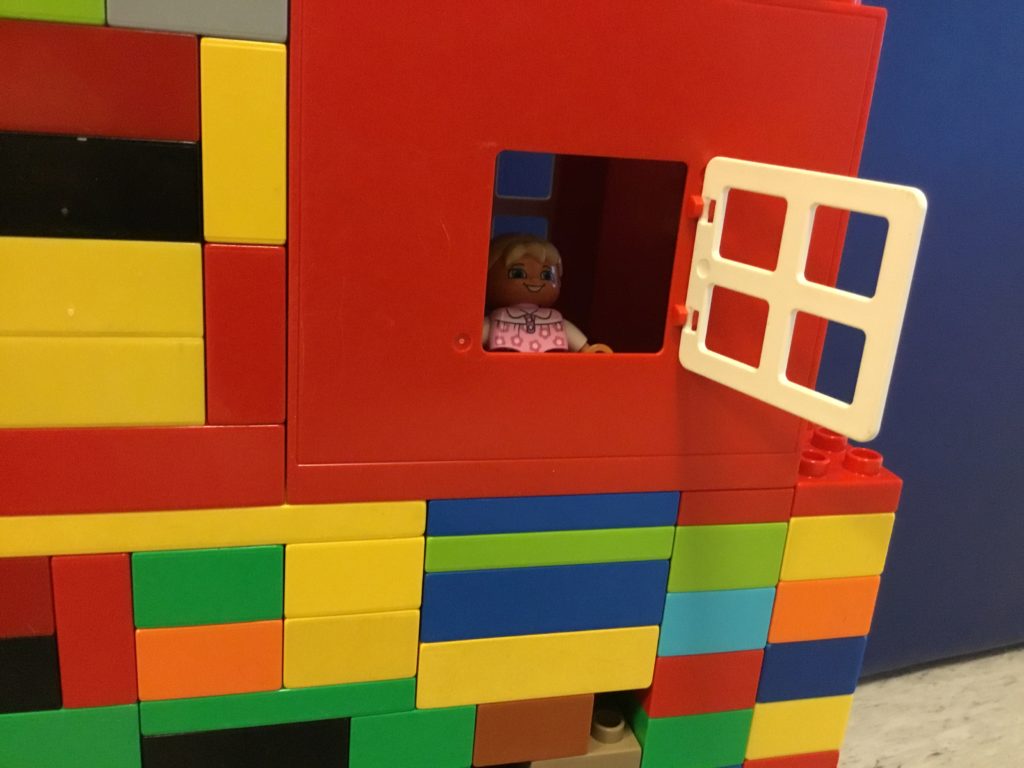
.
The process and product
The article focuses on the process and the final product — from the first idea till the final animated story.
When the children and teacher are recording the narrator voice, the children focus on what is the most important for them at that time — with a «here-and-now» perspective. The analysis shows that several elements included in the animated story are not mentioned by the children, such as Rapunzel standing by the window. The narrator voice only express parts of the story. To understand the whole — it is important to include all the elements — that is, all the modalities. Each single modality contributes to the story in its own way, as shown in the example below.
The analysis also shows that several of the children’s ideas plays an important part during the entire process — from the start till the end — f.ex. the narrative devices scary and funny. Early in the process the children clearly expressed that they wanted to create a scary and funny movie, and they talked about this during the entire process!
The analysis also shows that new elements are added during the process — and by being added to the story they also contribute to the development of the story. But the analysis also shows that some elements «disappear» — or becomes less important — during the process. This demonstrate the importance of seeing the final product as a snapshot of the children’s concerns at the end of the process.
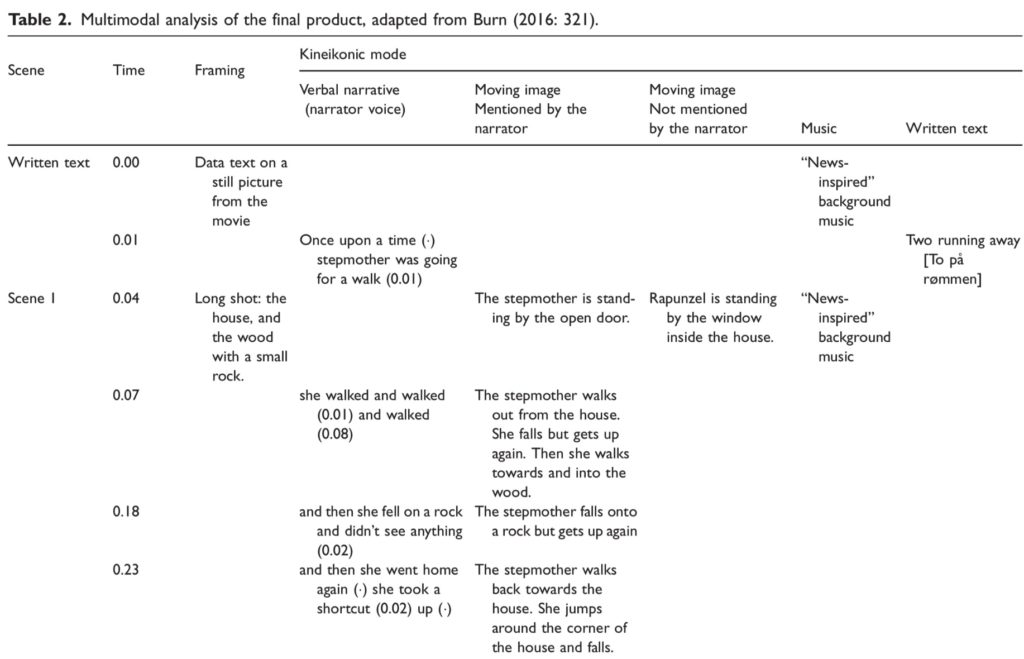
.
The results
A central finding in this study is the importance of including the process, the product, the narrative devices and all the modalities in the analysis — they are all important to understand the development of the story.
Another central finding is the importance of keeping ones eyes and ears open for the magic in children’s creative processes. The narrative devices scary and funny were very important for the children throughout the entire process — and this was acknowledged by the teacher.
In this article, the findings demonstrate the importance for early childhood teachers and researchers to acknowledge that all aspects are equally important — as bricks in a puzzle — when young children create animated stories. The different aspects contribute in different ways during the creation process — to a final product.
Link to the article
Undheim, M. & Hoel, T. (2023). An animated story created by a group of young children. Journal of Early Childhood Literacy, 23(3), 374-400. https://doi.org/10.1177/1468798420988756 (publisert online først, januar 2021). «Open Access».
Links to the other articles in my PhD-thesis:
- We need sound too!
- Teachers’ pedagogical strategies
- Participation, process and product
- Multimodalt samspill
References
Burn, A. (2016). Making machinima: Animation, games, and multimodal participation in the media arts. Learning, Media and Technology 4(2), 310-329.
Burn, A. & Parker, D. (2003). Tiger’s big plan: Multimodality and the moving image. In C. Jewitt & G. Kress (ed.), Multimodal Literacy (p. 56-72). Peter Lang Publishing.
Kress, G. (2010). Multimodality: A Social Semiotic Approach to Contemporary Communication. Routledge.
Kress, G. & Jewitt, C. (2003). Introduction. In C. Jewitt & G. Kress (ed.), Multimodal Literacy (p. 1-18). Peter Lang Publishing.
Marsh, J. (2006). Emergent media literacy: Digital animation in early childhood. Language and Education 20(6), s. 493-506.
Mills, K. (2011). “Now I know their secrets”: Kineikonic texts in the literacy classroom. Australian Journal of Language and Literacy 34(1), 24-37.
